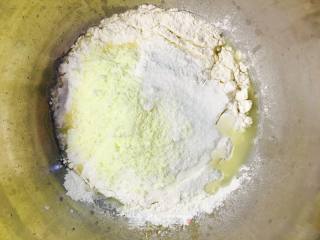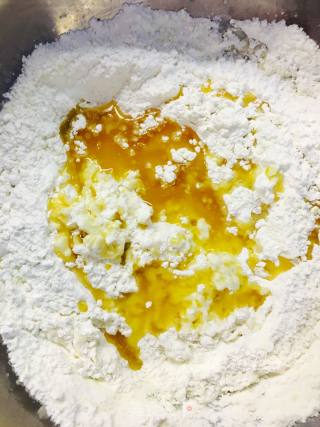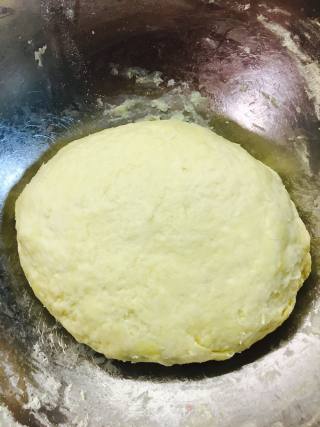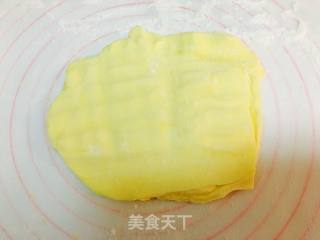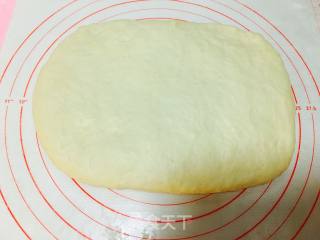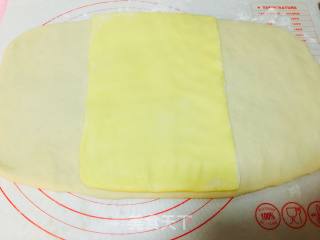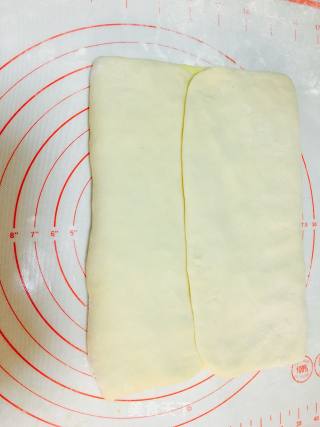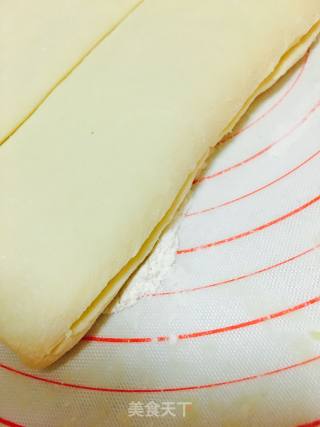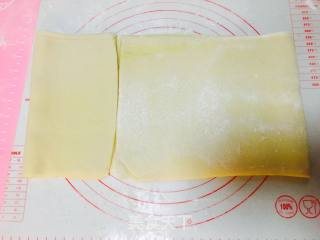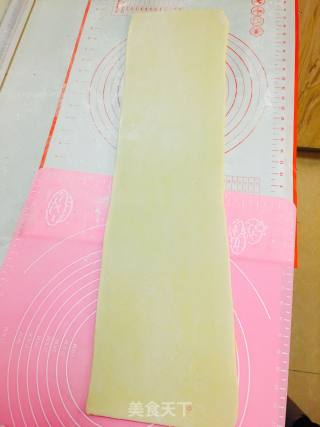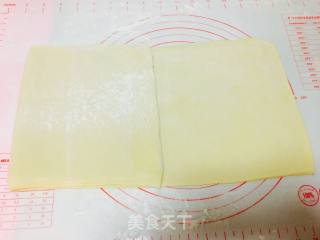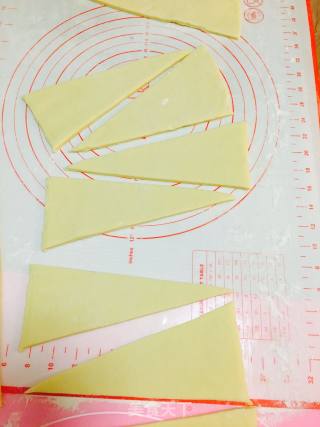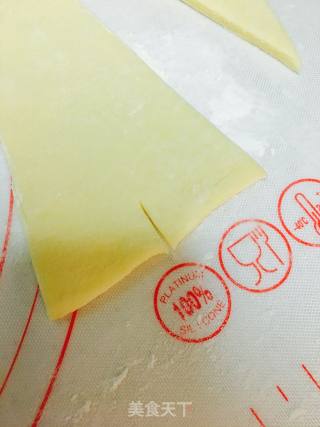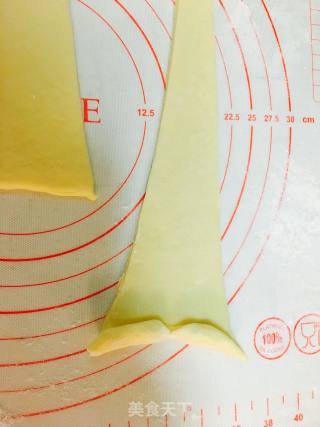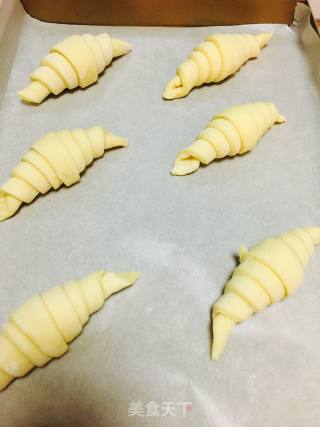French Croissant
1.
Fresh yeast, water, whole eggs. Use hand temperature to dissolve the fresh yeast.
2.
After mixing and dissolving, add T45 and then T55. Milk powder, sugar and salt. Browned butter. Knead into a ball.
3.
The dough is not smooth at this time. It's ok. Cover with plastic wrap and relax for 30 minutes.
4.
Take a piece of oiled paper and use a rolling pin to fold the butter repeatedly and smash it firmly.
5.
Use oiled paper, fold on all four sides, and roll the butter to the size you need.
6.
Knead the loose dough smoothly. Push and press with your hand. Flatten the dough.
7.
Press the flattened dough, roll it flat, and wrap the butter slices around the size. Put the butter slices that have been arranged before on the middle position. What needs extra attention here is that the butter should not be too hard. Press the butter sheet with your hand to make it better bond with the dough sheet. The butter slices are aligned with the dough slices up and down. Yes it is! Align without wrapping.
8.
Lift both sides of the dough sheet and fold it toward the middle to wrap the butter.
9.
Before making the first folding, we used a knife to make a cut on both sides of the dough. Hand powder
10.
Roll into a rectangle. Cut off the irregularities on both sides. On the left quarter, fold it toward the center. Then fold it from the right three-quarters to the middle. The two ends meet. Then fold in half from the middle of the dough. After folding, if you feel the butter is soft. Wrap in plastic wrap and let freeze in the refrigerator for 15 minutes.
11.
Open on the side. Roll the dough into a rectangle again. Repeat the previous four-fold fold. Freeze again for 15 minutes. If you feel that the butter has not become very soft, you can proceed directly to the next step.
12.
Roll out into a rectangular shape, and the dough pieces are like folded quilts. Three fold. Complete the third fold. Wrap it in plastic wrap and put it in the refrigerator for 30 minutes.
13.
Roll the dough sheet into a rectangular sheet with a thickness of 4 mm. Divide into isosceles triangles.
14.
Make a small cut at the bottom of the triangle with a knife. Stretch the whole triangle.
15.
Lift the corners on both sides of the opening and roll it inward.
16.
After the roll is finished, brush the surface with egg wash. Proceed to fermentation. The fermentation temperature should not exceed 30 degrees.
17.
Ferment to 2 times the size, brush the egg mixture again, and bake at 180 degrees for 5 minutes. Take out the baking pan and turn the pan. 170 degrees for another 10 minutes. The specific temperature feels adjusted by your own oven. Observe the color on the surface, and the surface shows a caramel color.
18.
Bring sugar water, water and sugar to a boil. After the litigation comes out, brush it on the surface. After brushing, return the litigation to the oven and bake for another 1 to 2 minutes, and the sugar water on the surface is dry.


Tips:
1. When wrapping the butter and rolling the dough sheet, you must keep sprinkling the hand powder to avoid sticking to the dough. 2. The temperature must be controlled throughout the process. High temperature butter will melt, whether you are rolling or fermenting, pay attention to the temperature. 3. To coke the butter, put the ordinary butter in a pot and boil it on a small fire, wait until its color is brown, turn off the heat, and filter. 4. The flaky butter has less water content, and the layer will be better than ordinary butter. 5. When rolling ordinary butter into slices, be sure to pay attention to the thickness of the butter slices to be consistent, and there should be no break points. 6. Fold three times during the whole process, two times for four times, and one time for three times. Make a cut on the side each time before rolling, and trim the edges after each rolling. 7. Regarding the freezing during the folding process, feel that the temperature of the refrigerator is adjusted to avoid freezing.


